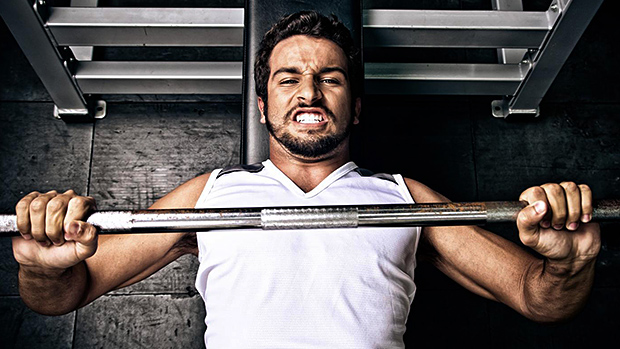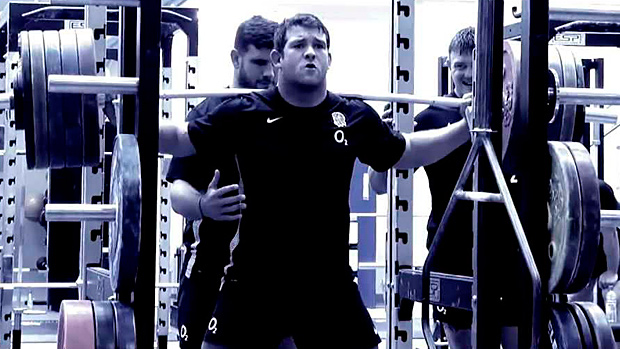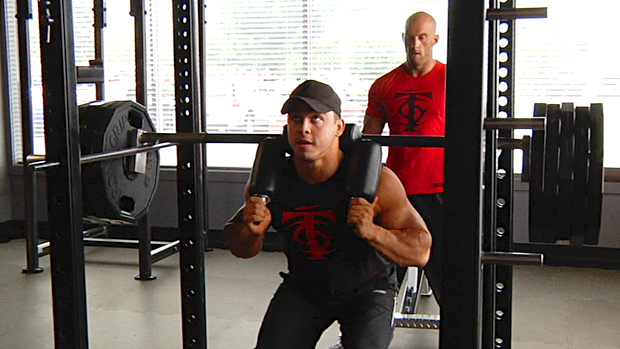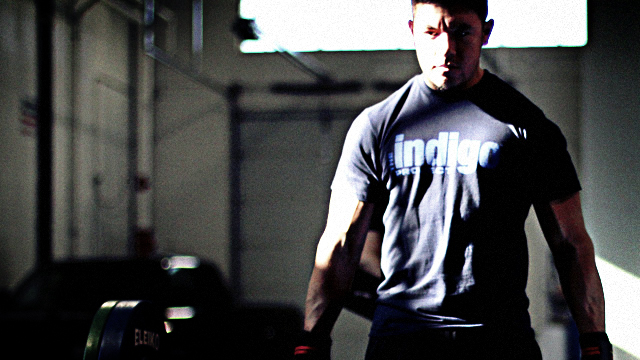Sorry to burst your bubble, but moving big weights isn't just about being a beast – it's also about being technically sound.
You could approach a bar with Herculean size and strength to spare, but if you fail to master the little things along the way, you'll never reach your true lifting potential. And like a wise man once said, "Potential is like a bowl of piss, all that matters is what you do with it."
There are technical aspects to all lifts, from lunges to snatches. While not as inherently complicated as the Olympic lifts, the big three powerlifts have technical aspects all their own.
Breaking the Big 3 down by their most idiosyncratic aspects would take up about 30,000 words and 7 hours of your hard-earned surfing time. Since no one wants that, let's break down one technical point of each lift.

Let's start off with some homework. Next Monday we want you to mosey on down to the local commercial gym – because there will indubitably be many people benching – and observe the bench press rodeo.
Barbells will kayak their way to lockout, elbows will flare until they're running parallel with the tops of heads, and feet will be kicked about like a Chuck Norris blooper reel. We weren't joking when we said rodeo. It's almost as if there's a competition to hold onto the bar for eight seconds.
Focusing on the kayaking barbells and flaring elbows, here's a solution that can fix both problems: spread the bar.
You won't literally spread the bar (although that would be impressive). Spreading the bar simply means that after you set your grip, pull so your hands put tension on the bar in opposite directions. It's a technique that powerlifters have used for years to improve bench press strength.
Spreading the bar does several things to improve your pressing performance. During the eccentric phase, it helps recruit the upper-back muscles and the rotator cuff musculature, creating stability in the shoulders and building a better platform to press from.
As you press during the concentric phase, spreading the bar makes better use of the triceps and gives more strength at lockout. Learning a new technique can be difficult, though, and there are always roadblocks.
Why Can't You Do This?
The answer goes beyond "weak rhomboids" or "weak triceps." Sure, making the required muscles stronger is an important piece of the pie, but improving the tissue quality on the muscles on the other side can also have huge benefit.
Dave Tate stresses that "tightness is the key" where the bench is concerned, but what's good tight and bad tight?
So you can bench 400. Good on you. Looking deeper, what's the condition of your chest muscles? Many lifters have gummed up their shoulders from pressing too much and overdeveloping the pecs, to the point that it "freezes" the upper back muscles into an undesirably lengthened and tightened position. This would be bad tight.
An already strong bench press can be made even stronger with some simple soft tissue work to release the other side from pulling so much, and free the mid back for greater action during sets of bench. So take a lacrosse ball or dense foam roller to your chest and front delts and get rolling!
Another matter that's rarely touched on in bench press articles is the contribution of the upper traps. While the rhomboids, rotator cuff muscles, and low traps are often noted for their pivotal roles in supporting the shoulder capsule during the lift, the upper traps also serve as huge stabilizers.
Having well-developed upper traps can lead to the shoulders staying where they belong – on the bench – for the duration of the rep and set. Their responsiveness can counter the effects of losing tightness through the other upper back muscles and the resulting "shoulder-reach" that can follow. Farmer's walks, other loaded carries, and a few cleans or high pulls can go a long way.
Practice "spreading the bar" with light weight first to familiarize yourself with the pattern. Don't try to push through the elbow joint, rather keep the entire arm involved by making the spread come from the rear deltoid, and on through the triceps. In a short time, you should notice an improvement in your bench press performance.

One of the biggest mistakes trainees make is turning the squat into a half-movement. Not range of motion wise; rather, not taking full advantage of the eccentric phase.
The down phase of the squat is dependent on good hip flexion, but too many lifters approach this passively, simply dropping down to the bottom position without creating tension through the hip flexors. This is a big mistake both for reaching good squat depth and producing a strong push during the up phase.
It's time for a quick experiment. Stand up and assume your normal squat stance. Now squat how you normally would. Be cognizant of your depth and how strong you feel when you drive up to the starting position. If you're healthy it probably felt all right, and you could get to parallel without too much trouble. But let's get closer to your potential.
This time around, get in your squat position, but rather than dropping down into the bottom position try to pull yourself down by using your hip flexors. Do this by tightening your abs and creating tension across the front of the hips. How did your squat feel this time? Did you get lower and feel stronger?
The tension you created by pulling down increased the stability of your core by recruiting the musculature next to your hip flexors, a phenomenon known as irradiation. Creating greater levels of stability allowed you to get deeper into your squat because it told your body it was okay to give your hips more mobility.
You were stronger because you created more tension. More tension equals more strength because it increases the amount of motor units you can recruit and the amount of force you can exert against resistance.
Remember, a solid descent during a squat is necessary for a strong ascent; using your hip flexors to create tension results in better squat depth and increased pushing strength. It can, however, be easier said than done.
Why Can't You Do This?
It's easy to "think" you're doing the right thing when you try this new technique, when in reality you're not. It takes a lot of practice to engage your hip flexors on the negative half of a squat. With all the articles touching on stretching the hips to improve squat depth and pelvic balance, making them "fire up" during the exercise seems foreign. But engaging the hips can help them work in your favor, if you let them.
Here's more food for thought. We know that the hip flexors are divided into two major muscle groups, the iliacus and psoas muscles.
The iliacus is heavily involved in hip flexion up to around 90 degrees, where you'd typically meet parallel in a squat. The psoas chimes in during hip flexion of even less than 90 degrees – in other words, the deeper below parallel you squat, the more dependent on the psoas muscles you become.
With this in mind, we have to acknowledge that unless we're competitive sprinters or jumpers, our psoas is probably getting the shaft in terms of basic day-to-day activation – there are very few "high knee" exercises out there, and even fewer that are easy to master.
Here's one exercise that's money though:
One Legged Hip Thrust with Tennis Ball. Plant the tennis ball in the fold of the hip and, without assistance from your hand or arm, keep the ball there by holding the knee tightly up to the chest. Perform a typical glute bridge using the other leg.
This is surprisingly difficult to do; the stronger the psoas muscles, the higher you'll be able to bridge without the tennis ball falling out. For more ways to activate the psoas, check out this article.
As a result of the psoas being a hard muscle to hit, often the iliacus muscles are much stronger and tighter than they need to be, creating an imbalance and lowered involvement of the lower abdominals.
A quick note on those: be aware that the hip flexors are filled with fast twitch muscle fibers. Any low ab work we decide to do (hanging leg raises are a perfect example) needs to be performed slowly for the lift to be initiated by the lower abdominals. Without this concentration on tempo, the hip flexors will override the low abs every time.
Now that you're well-versed, your revamped squat should get deeper than a Wall Street banker's pockets.

What should be the simplest of the big three lifts often results in something resembling a circus contortionist act.
In the center of the ring, behold, the amazing Camel man!
Looking around the few commercial gyms that still allow deadlifting with barbells heavier than what's found in a typical BodyPump class, it seems like the camelback deadlift is a proven technique for pulling heavy weight.
Good coaches and educated lifters know that's far from the truth – and before you smart-apples start referencing some ugly max effort pulls from competition videos, remember that isn't the form that the lifter likely trained with. There's a lot of adrenaline involved with competition and guys will do whatever it takes to get the damn bar up.
Bracing is the fix for the camelback. Learning to pull the lats tight and using your air to create intra-abdominal pressure is often enough to keep your spine neutral (or close to it) as you deadlift. But before you brace, getting your hips to the right position is crucial.
Everyone has different levers. Some of us are tall and lanky with short torsos, others have the opposite proportions. That means there isn't "a one size fits all" answer to hip placement during deadlift setup as hip height is determined by your levers.
You need to get your hips to the right height for you. Set your hips too low and your ass will "pop" to the position where your hips can do the work. Set them too high and you won't have drive off the floor. Both situations result in a greater amount of stress on your lumbar spine and the camelback pulling position.
Fortunately, there's an easy way to find the right hip position for you.
Start with your shins an inch or two away from the bar, then bend over and set your grip with your legs straight and your back rounded. Keeping your arms straight, begin to drop your ass toward the floor as you build tension that runs through your arms and into your back – the majority of the tension will come from tightening your lats by depressing your shoulder blades, setting your grip hard, and squeezing the floor with your feet.
As you drop your ass and continue to create tension your hips will settle in the spot that's right for your levers. You should feel a dramatic amount of tension running through your arms, back, and hips if you settle in the right position.
If you set with your hips too high you'll find it easy to round your back; set too low and you'll feel a lot of tension on your quads. Like hitting a baseball, it's all about finding the sweet spot.
Why Can't You Do This?
If the setup changes above helped get your back flat then you needn't worry about this part. But if you still look like Franklin the Turtle, the real problem may lie in your skeleton. When the upper back is kyphotic, or lacking thoracic extension, what "feels" like a flat, neutral spine is actually a spine stuck in thoracic flexion.
Here are some good pointers:
- Make friends with a foam roller. Thoracic extensions with a foam roller placed under the mid back can help extend the spine and get it used to achieving the desired position.
- Light up your trap-3 muscle. Trap-3 raises are a solid way to do this. Low weight for high reps is the way to go, as these postural muscles respond well to high endurance training methods.
- Don't encourage kyphosis with other movements. This is an important one. We shouldn't be putting ourselves through exercises that make us assume poor structural positions. Crunches, sit-ups, and even poorly executed pull-ups can all contribute to the ribcage moving towards the hips, promoting the very thoracic flexion we're trying to avoid. Ditch them, or in the case of pull-ups, learn to do them right and you're good to go.
We can scrutinize Big 3 technique until being a YouTube authority becomes an Olympic sport, but the basic requirements are simple: pick up the bar, squat the bar, push the bar off the chest.
But what separates a guy who can do those things with 300 pounds and a guy who can do them with 700 pounds isn't just slabs of muscle and time spent under the bar, but also every little link contributing harmoniously to a successful lift and a healthy, balanced body.
At the end of the day, the healthier the body, the better the performance. Take these tips and achieve your potential. You've got some new PRs waiting for you!





